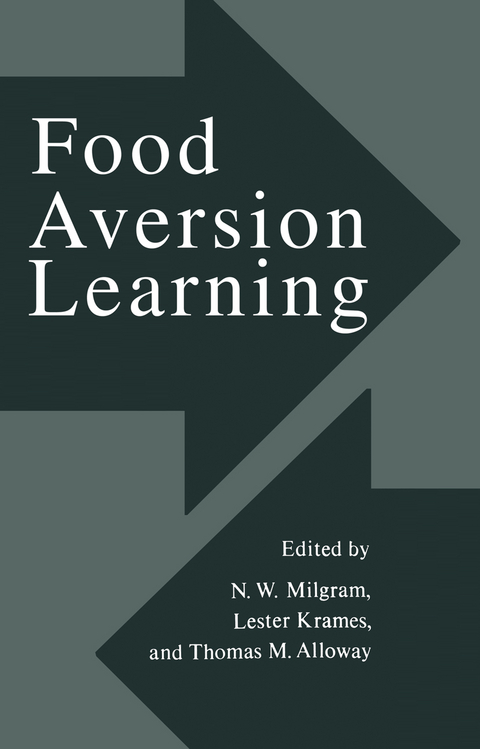
Food Aversion Learning
Springer-Verlag New York Inc.
978-1-4757-1301-5 (ISBN)
1 Learning as a General Process with an Emphasis on Data from Feeding Experiments.- 1. Deficiencies of Traditional Learning Theories.- 2. Neoevolutionary Learning Theories.- 3. Food Aversion Learning Governed by a General Process.- 4. The Epistemic Part of the General Learning Process.- 5. References.- Appendix to Chapter 1 Interference with Progress by the Scientific Establishment: Examples from Flavor Aversion Learning.- 2.1. Sociology of T2.- 2.2. How T2 Is Hidden.- 2.3. Society and T2.- 2 Biological Significance of Food Aversion Learning.- 1. The “Learning-as-a-General-Process” Assumption.- 2. Are the Specialized Features of Food Aversion Learning Adaptive?.- 3. Does Our Understanding of Food Aversion Learning Have Implications Regarding the Mechanisms of Learning in Other Situations?.- 4. References.- 3 Stimulus Characteristics in Food Aversion Learning.- 1. Sensory Modalities.- 2. Parameters of Taste.- 3. Species Differences.- 4. References.- 4 Gustatory Avoidance Conditioning by Drugs of Abuse: Relationships to General Issues in Research on Drug Dependence.- 1. Some General Issues.- 2. Studies of Mechanism: How Does the UCS Work?.- 3. An Area of Conflict: Interpreting the Effects of Prior Exposure to the UCS on Subsequent Conditioning.- 4. Summing Up.- 5. References.- 5 Suppression of Interspecific Aggression Using Toxic Reinforcers.- 1. Introduction.- 2. Muricide, the Mouse-Killing Response of Rats.- 3. Some Species Differences: Suppression of Interspecific Aggression by Food Aversions in Predatory Species.- 4. Conclusions.- 5. References.- 6 Koalas, Men, and Other Conditioned Gastronomes.- 1. Naturalistic and Anthropological Observations on Diet Selection.- 2. Experience and Taste Preference.- 3. Neural Structure and Feeding Function.- 4. Summary: ThePrototypical Gastronome.- 5. References.- 7 Physiological Mechanisms of Conditioned Food Aversion.- 1. Introduction.- 2. Functional Organization of CFA Circuits.- 3. ECS Studies.- 4. Drug Effects.- 5. Developmental Studies.- 6. Electrophysiological Analysis.- 7. Conclusions.- 8. References.
| Zusatzinfo | 30 Illustrations, black and white; XV, 263 p. 30 illus. |
|---|---|
| Verlagsort | New York, NY |
| Sprache | englisch |
| Maße | 152 x 229 mm |
| Themenwelt | Geisteswissenschaften ► Psychologie ► Klinische Psychologie |
| Medizin / Pharmazie ► Medizinische Fachgebiete ► Psychiatrie / Psychotherapie | |
| ISBN-10 | 1-4757-1301-0 / 1475713010 |
| ISBN-13 | 978-1-4757-1301-5 / 9781475713015 |
| Zustand | Neuware |
| Haben Sie eine Frage zum Produkt? |
aus dem Bereich


